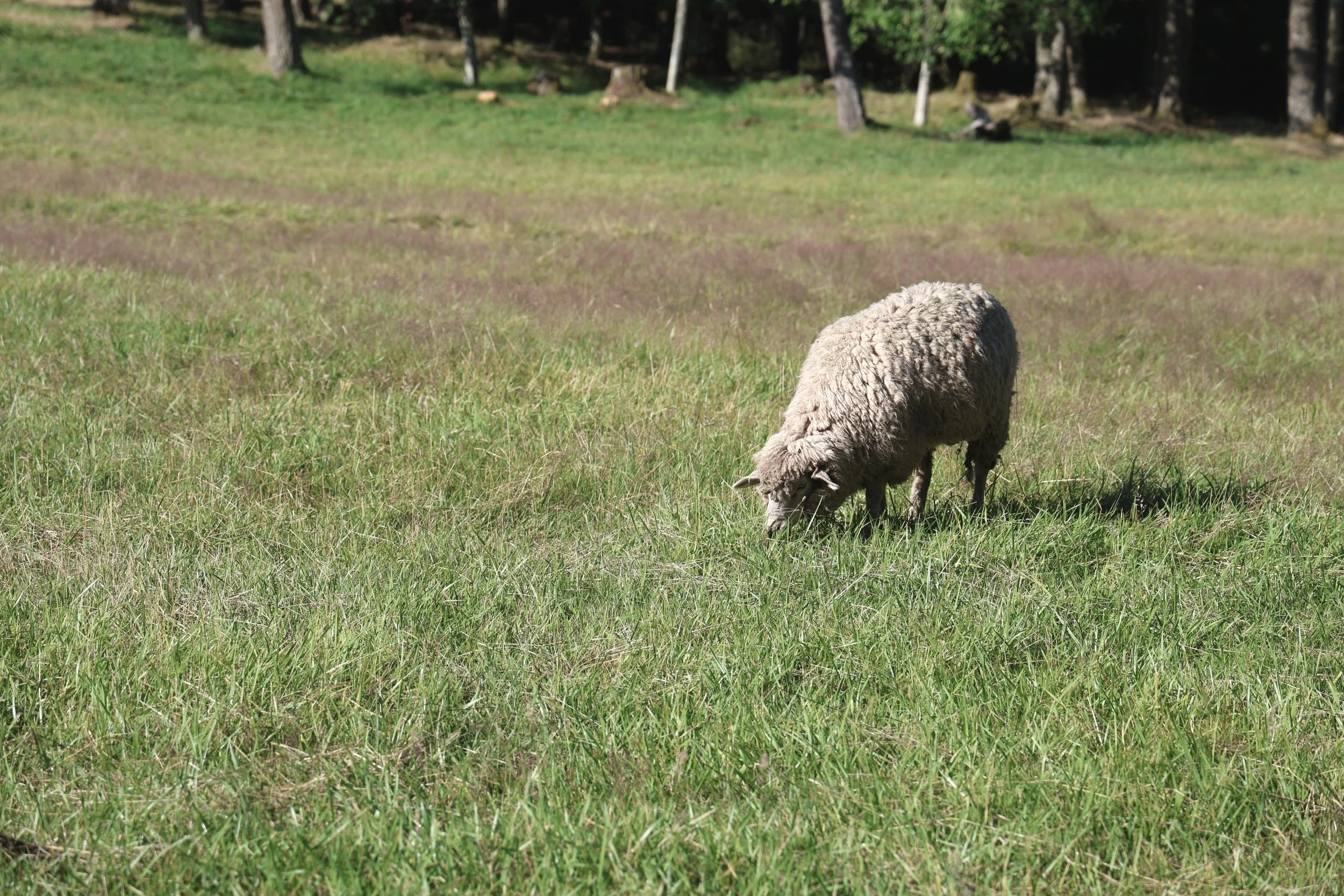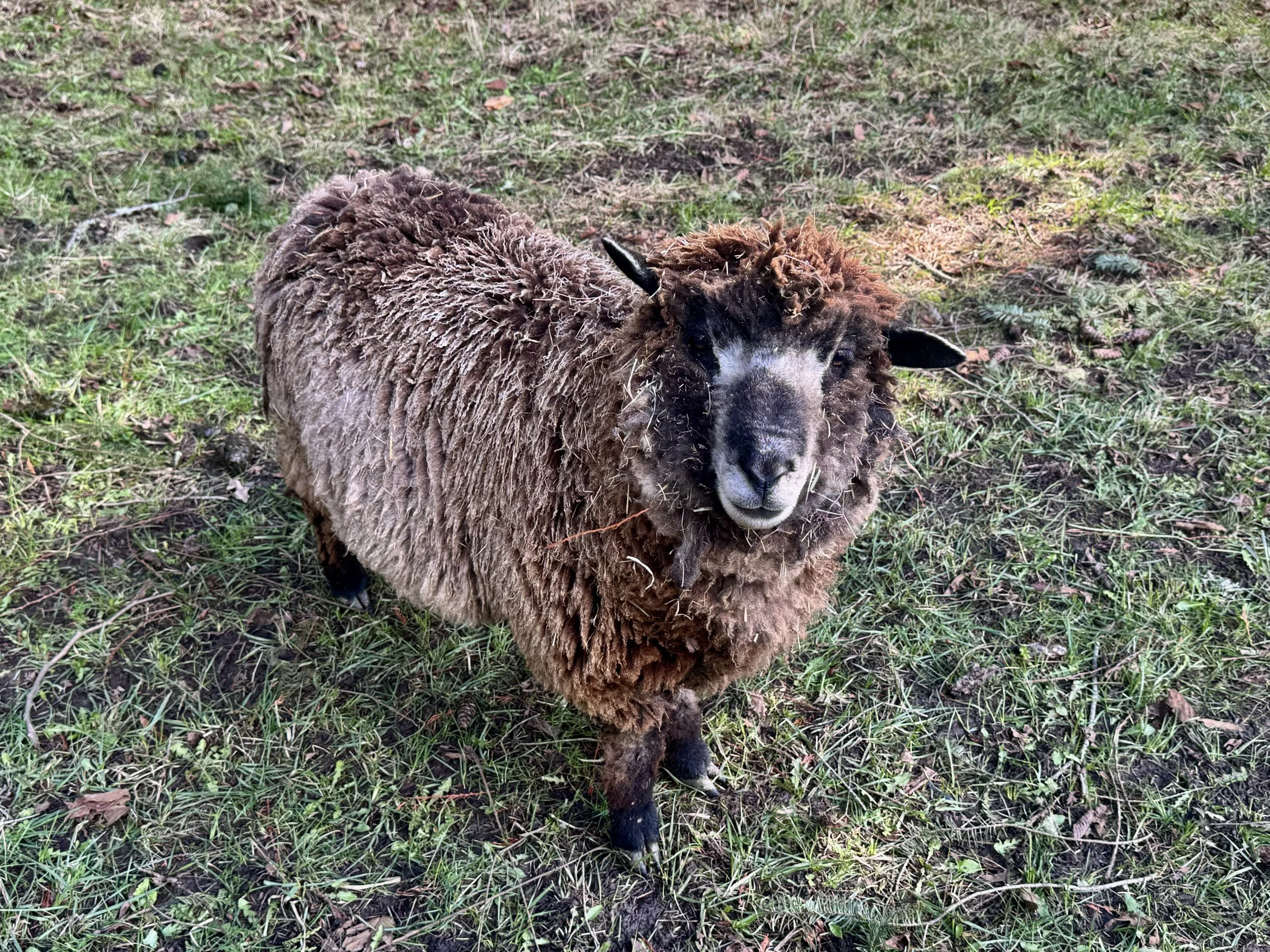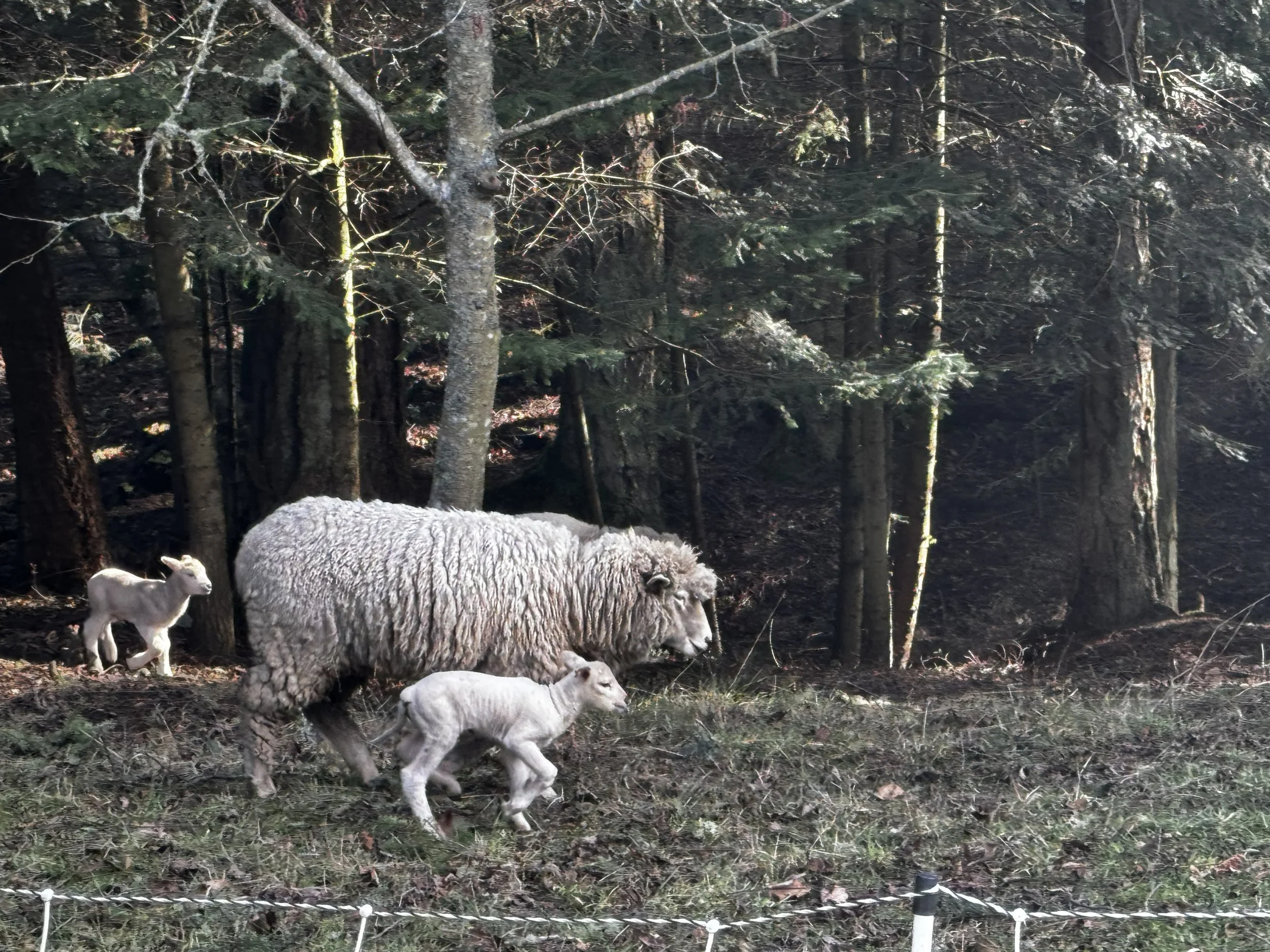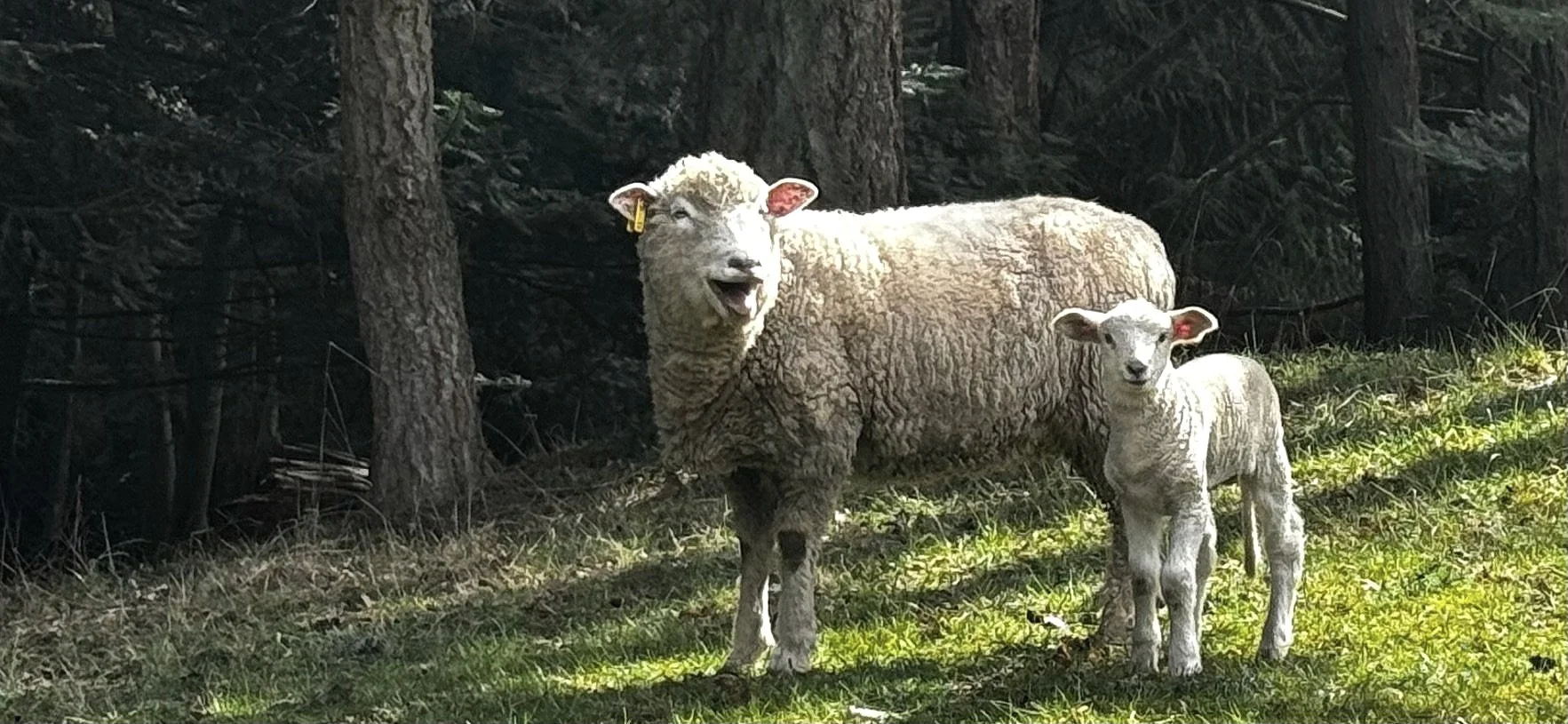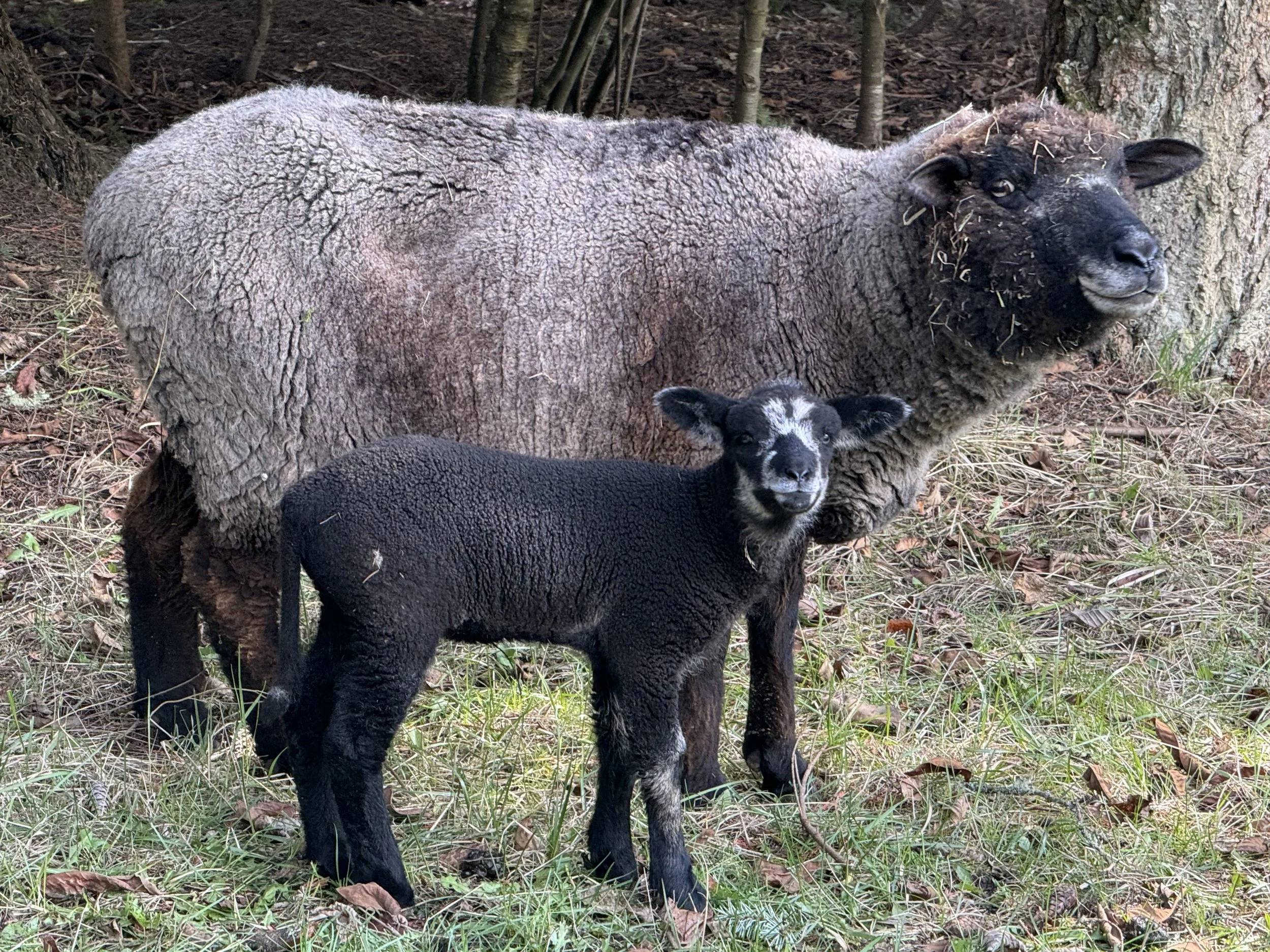Our Sheep
We started out with four sheep and have had as many as 100. Currently, we have around 20 in our flock. They are used for their wool. Our sheep graze in the pastures and eat produce and fruit that has gone to seed, is starting to go bad, or has touched the ground - the stuff we can’t sell to people. As a result, our sheep eat really well.
The Corriedale Sheep
This reliable, multipurpose wool is a pleasure to spin, knit, crochet, or weave. Its long staples and well-defined, even crimp provide loft and elasticity and make it an excellent hand spinning wool. Within a single fleece, the wool tends to be consistent in length, crimp profile, and fineness. Locks are normally rectangular and dense, with flat tips. You can comb, flick, card, or spin from the locks. Cut the staples in half if you want to card fiber that is on the long side for woolen preparation. Corriedale is easier to spin than many wools of similar fine-ness, and is fairly easy to find in yarn form.
Effect of dyes:
The whites take dye well; the grays and browns can be overdyed.
Best uses:
If you want to make sweaters, socks, pillows, blankets, and other household textiles, this medium-soft, resilient wool is ideally suited to the task. For felters, it's definitely a wool to experiment with.
Origin: New Zealand
Fleece weights: 10-20 pounds (4.5-9 kg)
Staple lengths: 3"-6" (8-15 cm)
Fiber diameters: 25-35 microns
Natural colors: White, gray, brown, black

